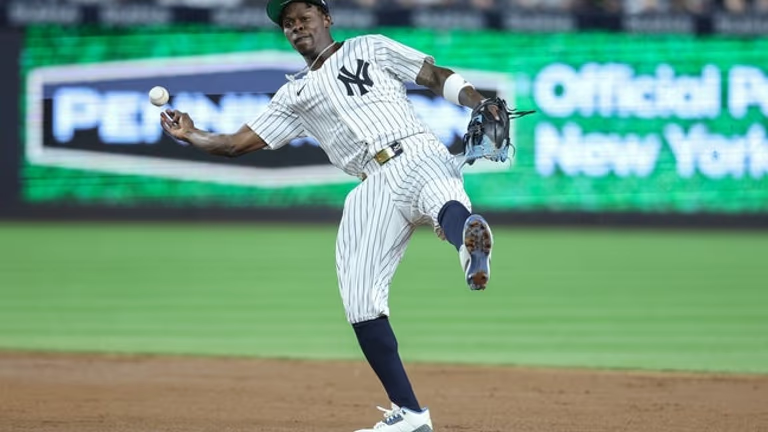Jazz Chisholm Jr.'s journey back from an oblique injury is creating an interesting conundrum in the Yankees infield, casting a significant spotlight on how this powerhouse franchise will maneuver its roster. After closing out last season at third base, having impressively adapted to the position on short notice, Chisholm started this year as the Yankees’ primary second baseman. But with DJ LeMahieu sliding back into action with the finesse and experience he's known for, the Yankees now face a choice that could redefine their infield structure.
In his first 14 games back, DJ LeMahieu has started at second base ten times, reasserting his value in the team’s lineup. But now that Chisholm is nearing his return — he's already started a rehab assignment with the Somerset Patriots — a pivotal decision looms.
Will it be Chisholm or LeMahieu who shifts to third base? Given the stats and circumstances, a deep dive into defensive metrics indicates an ideal scenario: Chisholm should remain at second.
Even in just one month of play this season, Chisholm boasts a Defensive Runs Saved (DRS) of 3 and Outs Above Average (OAA) of 3 — strong indicators of his defensive prowess. In contrast, LeMahieu, whose best Gold Glove days might be behind him, posted a -1 DRS at second the last time he spent considerable time there in 2022.
However, despite these numbers painting a pretty clear picture, the Yankees seem to be leaning towards Chisholm transitioning back to third base. According to whispers from the clubhouse and reports on the YES Network, that’s precisely the direction they're contemplating. Manager Aaron Boone seems to be signaling that flexibility might outweigh straight statistical performance.
Chisholm, speaking after a third base stint with Somerset, reiterated his team-first mentality, emphasizing that his focus remains on chasing championships, not individual accolades. His openness to switching positions again highlights his versatility and eagerness to contribute wherever needed.
It's understandable why the Yankees might consider this move. Chisholm handled third base admirably under pressure last season, managing 6 OAA despite a few initial stumbles, all while still finding his way in a heated pennant race.
On the flip side, early hopes of a rejuvenated LeMahieu appear to be fading — his recent 3-for-26 slump and seven strikeouts tell a less promising story than his initial return suggested. In fact, Oswald Peraza’s solid defensive performance at third raises questions about LeMahieu's place in the starting lineup.
The Yankees' considerations to trade for another player add another layer of complexity. With the trade deadline approaching, the buzz suggests that more second basemen will be on the market than third basemen. This speculation could be pushing the Yankees to ensure Chisholm’s adeptness at both positions, preparing for any scenario that might unfurl.
As strategic as this could be, one can't help but feel this might be a strategic gamble, perhaps slightly premature. While preparing for future trades is a smart move, uprooting a player from a position where they’ve thrived based solely on hypothetical scenarios might carry risks of its own.
That’s the curious position the Yankees find themselves in – balancing present performance with the anticipation of future needs. As we await Chisholm’s official return, the path the Yankees choose could shape not just their infield, but the broader narrative of their season.


